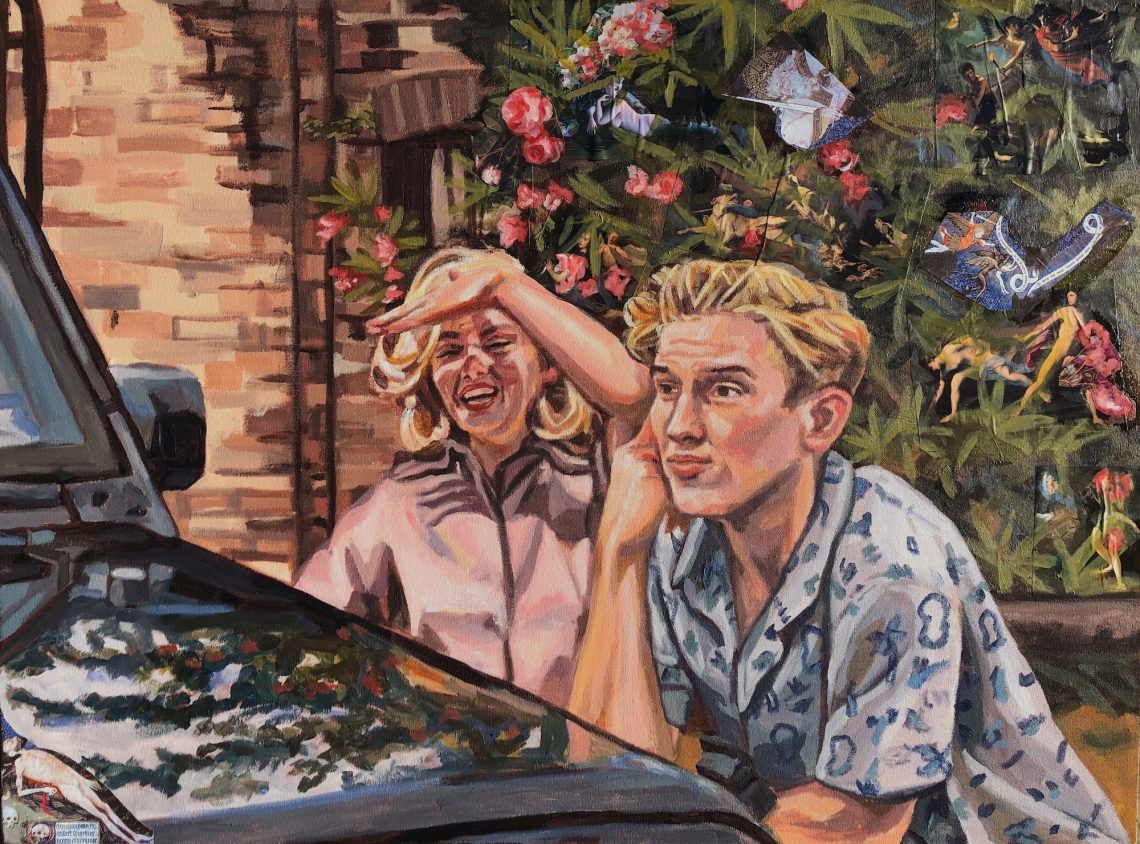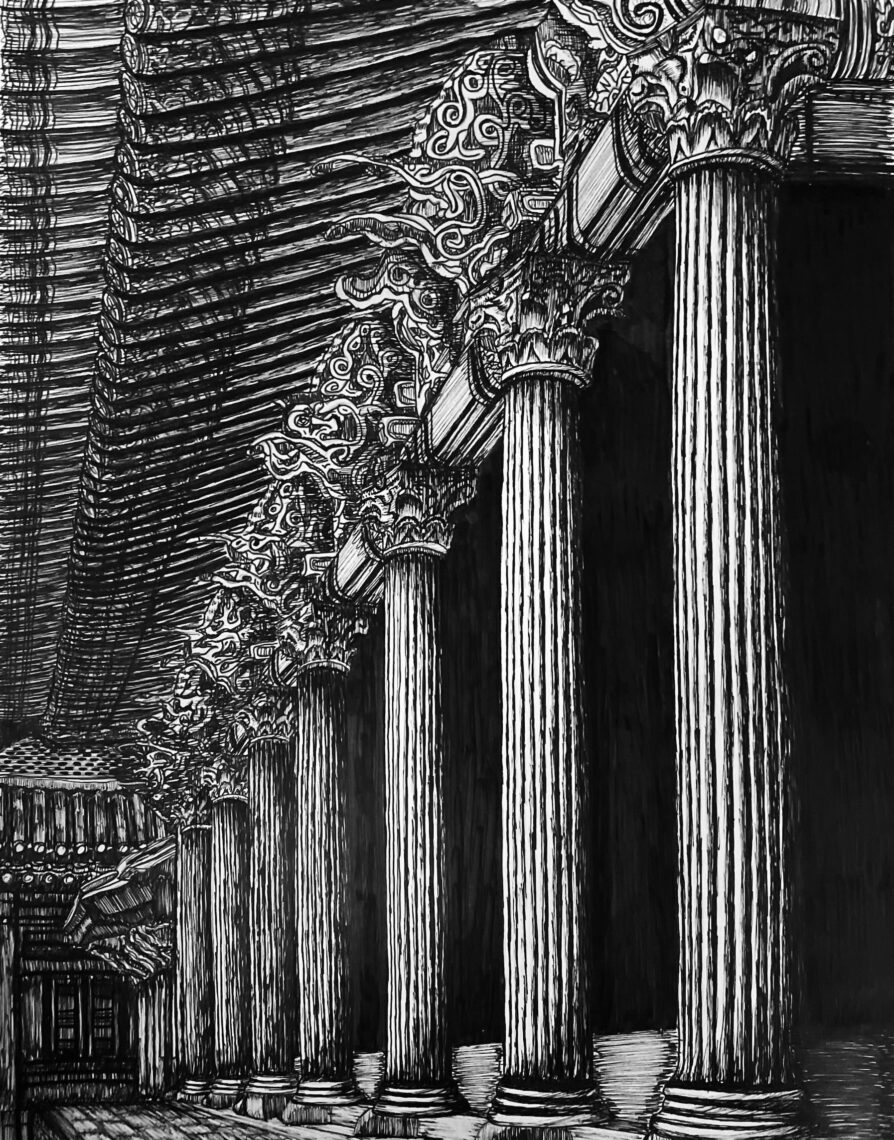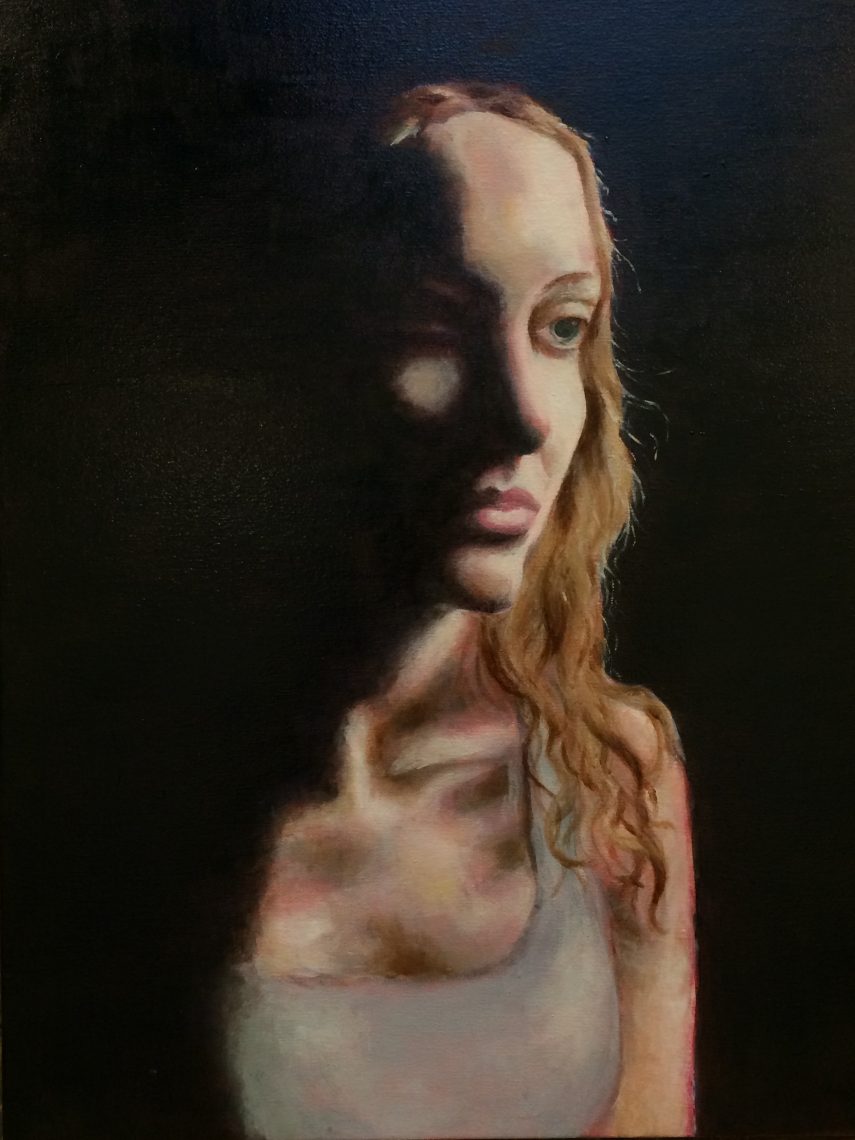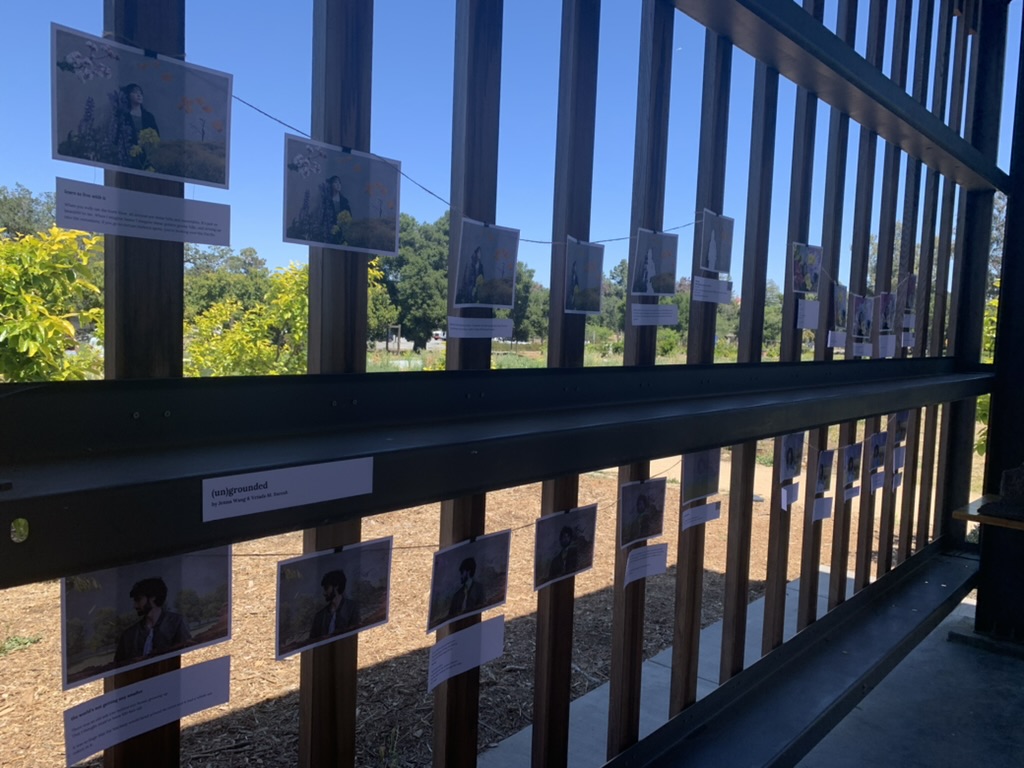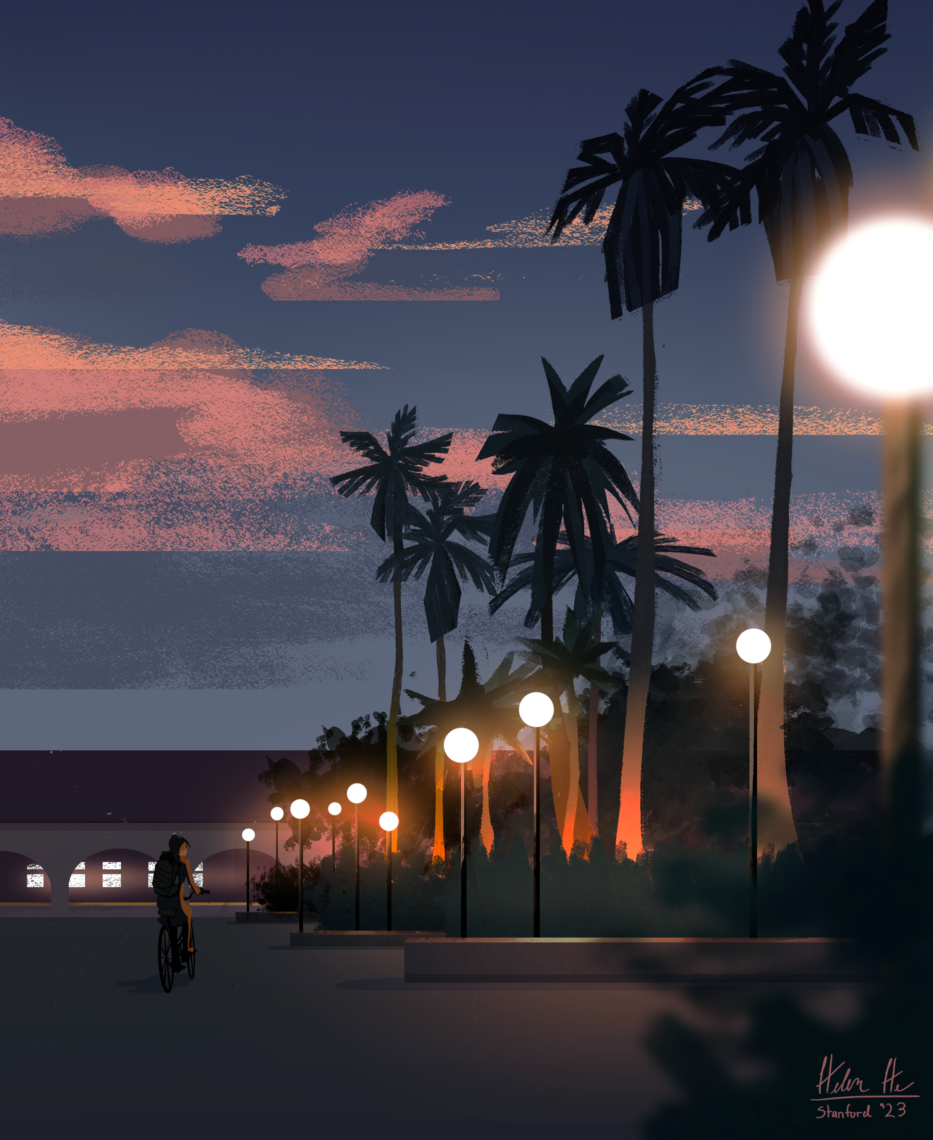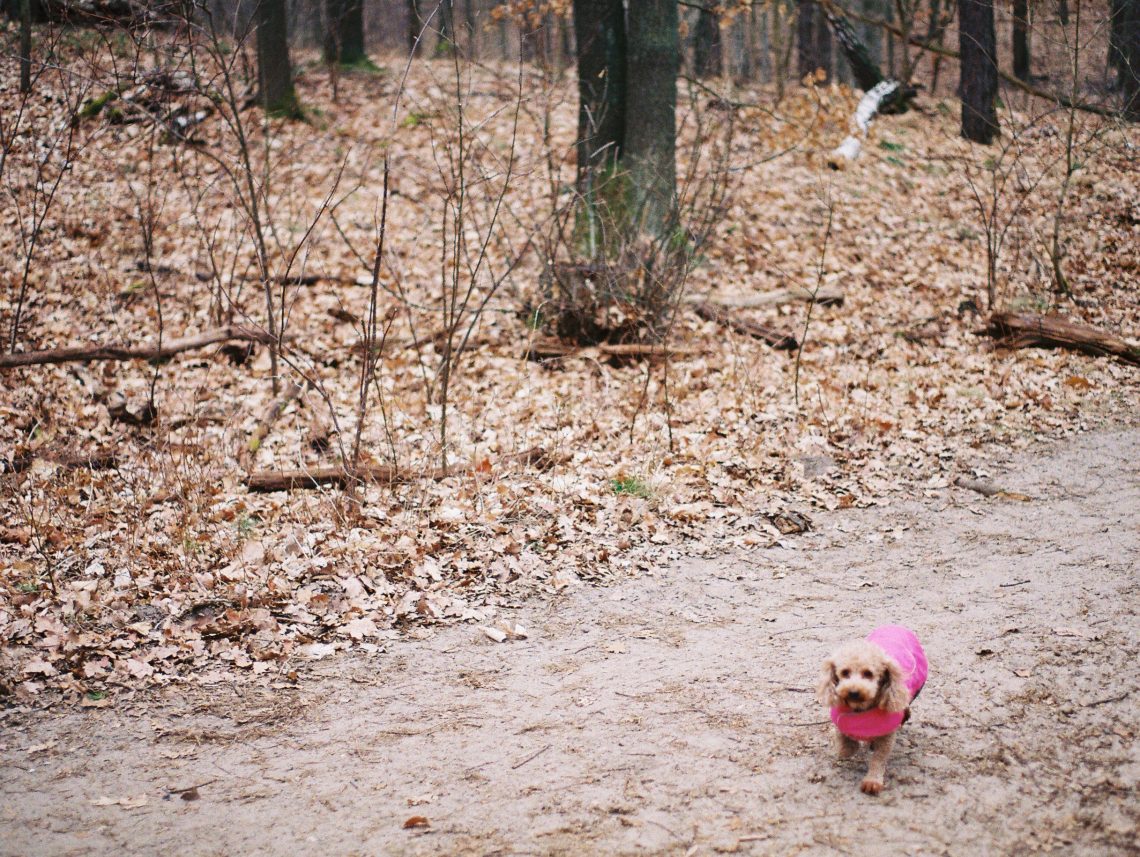 Rendering courtesy of Stanford University and Diller Scofidio + Renfro.
Rendering courtesy of Stanford University and Diller Scofidio + Renfro.
New building, new faculty demonstrate ambitious growth plans for Stanford’s Department of Art and Art History
The university reveals Diller Scofidio + Renfro architectural renderings for the McMurtry Building, scheduled for completion in 2015, and announces two new art history faculty, Alexander Nemerov and Richard Meyer.
Earlier this month, during their final meeting of the academic year, the Stanford Board of Trustees moved two significant building projects forward: the Anderson Collection at Stanford University and the McMurtry Building for the Department of Art and Art History.
Ennead Architects’ renderings of the building to house the Anderson Collection of post-World War II American art were revealed shortly after the board meeting, and now we get a glimpse of the McMurtry Building, designed by Diller Scofidio + Renfro (DS+R).
DS+R, along with the executive architect, Portland, OR-based Boora Architects, has designed not only a new home for the Department of Art and Art History but an interdisciplinary hub for the arts at Stanford that will foster interaction and collaboration among students and faculty, and support the integration of the arts into university life.
“We are so fortunate to have this stunning addition to the campus and such a marvelous new home for the Department of Art and Art History. The McMurtry Building will undoubtedly be a favorite gathering spot for students from every corner of the university,” said Leslie Hume, chair of the Board of Trustees.
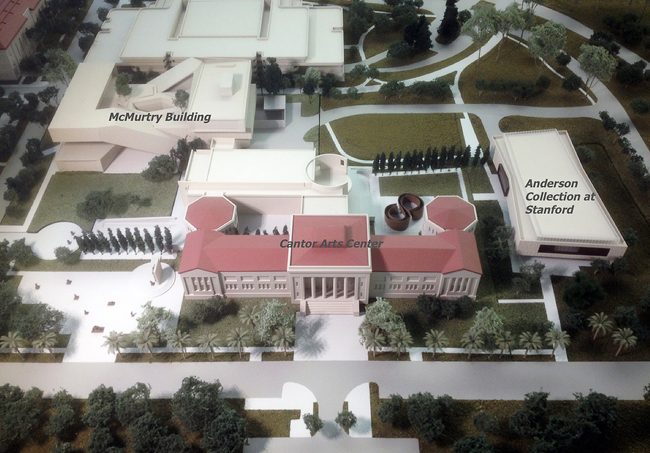
Rendering courtesy of Stanford University and Diller Scofidio + Renfro.
Housed within 96,000 gross square feet and under one roof for the first time will be programs in art practice, design, art history, film and media studies, and documentary film and video. The building will also include art studios, screening spaces, film editing rooms, exhibition space, the Experimental Media Art Lab and Sound Studio, and the Art and Architecture Library.
The 1917 Thomas Welton Stanford Art Gallery near the Main Quadrangle will remain an active exhibition venue for student work as well as works by professional artists in support of the art and art history curriculum. In combination with the additional gallery and informal exhibition spaces at McMurtry, the opportunities to display art on campus will increase dramatically.
Staff and faculty members have devoted hundreds of hours to make sure the new facility, including all of its equipment, will support the department’s diverse programs and the teaching mission.
“Among the many challenges posed by the prospect of a new building is the need to imagine new and different ways of doing things that the department has been doing for years,” said Nancy Troy, chair of the Department of Art and Art History. “Now, we and our students have an opportunity to rethink customary practices. The design features of the McMurtry Building encourage all of us to engage ever more intensively with one another to enhance our teaching, scholarship and creative practices.”
The program vision for the building is being developed with the leadership of the faculty, together with the office of the dean of the School of Humanities and Sciences and Stanford University Libraries & Academic Information Resources.
“Deedee and I are delighted to contribute in this way to the emphasis on the arts on the Stanford campus. This new building, the Anderson Collection at Stanford University and Bing Concert Hall will complement the Cantor Arts Center and form a wonderful arts district on campus,” said Burt McMurtry.
The McMurtry Building contributes to the development of the arts district at the entrance to the university. When the building is completed in 2015, it will join the company of the Cantor Arts Center, Bing Concert Hall and Anderson Collection at Stanford University.
The new art and art history facility, named in recognition of Deedee and Burt McMurtry (MS ’59, PhD ’62), will significantly enhance and expand the role the arts play throughout campus. Their $30 million gift toward the creation of the building is nothing short of transformative.
“Deedee and I are delighted to contribute in this way to the emphasis on the arts on the Stanford campus. This new building, the Anderson Collection at Stanford University and Bing Concert Hall will complement the Cantor Arts Center and form a wonderful arts district on campus,” said Burt McMurtry.
This is the first building project on the Stanford campus for DS+R. Boora Architects was the architect of the multiple buildings at the Graduate School of Business and the Science and Engineering Quad, and led the master planning efforts at the School of Medicine.
Construction of the McMurtry Building will begin in 2013.
Building concept
Charles Renfro of DS+R explains that the McMurtry Building design “responds to the pedagogical ambitions of the studio art and art history programs, which will support traditional modes of art making and teaching while promoting student and faculty collaboration. The Art and Architecture Library acts as a facilitator between these two arms of study, literally and metaphorically positioned between them.”
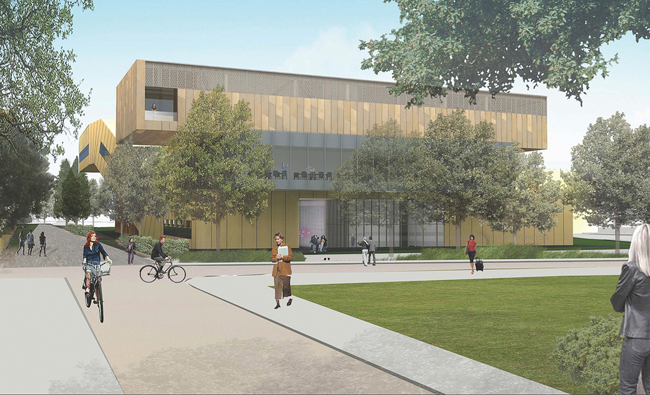 The building is designed to support both making art and studying art.
The building is designed to support both making art and studying art.
Design features include an open-air interior courtyard, a “transparent box” library and windows optimizing natural light and views from classrooms. Clerestory ribbon windows, which trim the top of the facility’s third level, maximize pinup wall space in the art practice studios.
There also will be a flexible presentation space, “flex-pres” for short, with retractable seats, making possible the presentation of other performance arts such as drama and music.
The exterior spaces of the McMurtry Building provide program opportunities as well as connections to the Cantor and Anderson buildings.
A third-level sky court is designed as a series of outdoor rooms that serve as collaborative breakout areas as well as art practice spaces. A second-level terrace adjacent to the library and overlooking the shared lawn connecting the McMurtry Building and the Cantor Arts Center provides a venue for student study, performance or small social events.
The first-level covered court serves as a community space encouraging connections between the McMurtry lobby, café, student and faculty exhibition space, and the sculpture studio, including areas for working in wood and metal. The flex-pres space, with its operable glass garage door, faces the lawn and can accommodate a variety of uses including classroom, exhibition, performance, social and film-screening opportunities.
Growth plans for department
Troy has ambitious plans for the growth of the Department of Art and Art History that include making the new building a university arts hub and increasing the faculty ranks. Already this summer, two distinguished art historians will join the Stanford faculty: Alexander Nemerov and Richard Meyer.
Nemerov teaches and writes about American visual culture from the 18th to the mid-20th century, focusing on painting, sculpture, photography and film. Most recently Nemerov served as chair and professor in the Department of the History of Art at Yale University.
Meyer was associate professor of art history and fine arts in the Department of Art History at the University of Southern California. He also directed the interdisciplinary Visual Studies Graduate Certificate program at USC and the Contemporary Project, a multi-year initiative to forge new dialogues between the academy and the art world.
These new hires reinforce Stanford’s preeminent leadership in American art and further enhance the excellence of the department.
“In addition to being outstanding scholars in American art, Alex and Richard have broad ranging interests including film, photography, modern art and curatorial practice that will enable them to strengthen the links between the diverse programs within the department,” said Troy.
The vision for the growth of the department and the arts district is part of the Stanford Arts Initiative, which comprises significant investments in the arts across campus, including the creation and endowment of new arts facilities, faculty positions and graduate fellowships, and academic and extracurricular programs designed to encourage interdisciplinary collaboration and facilitate arts experiences across campus.




